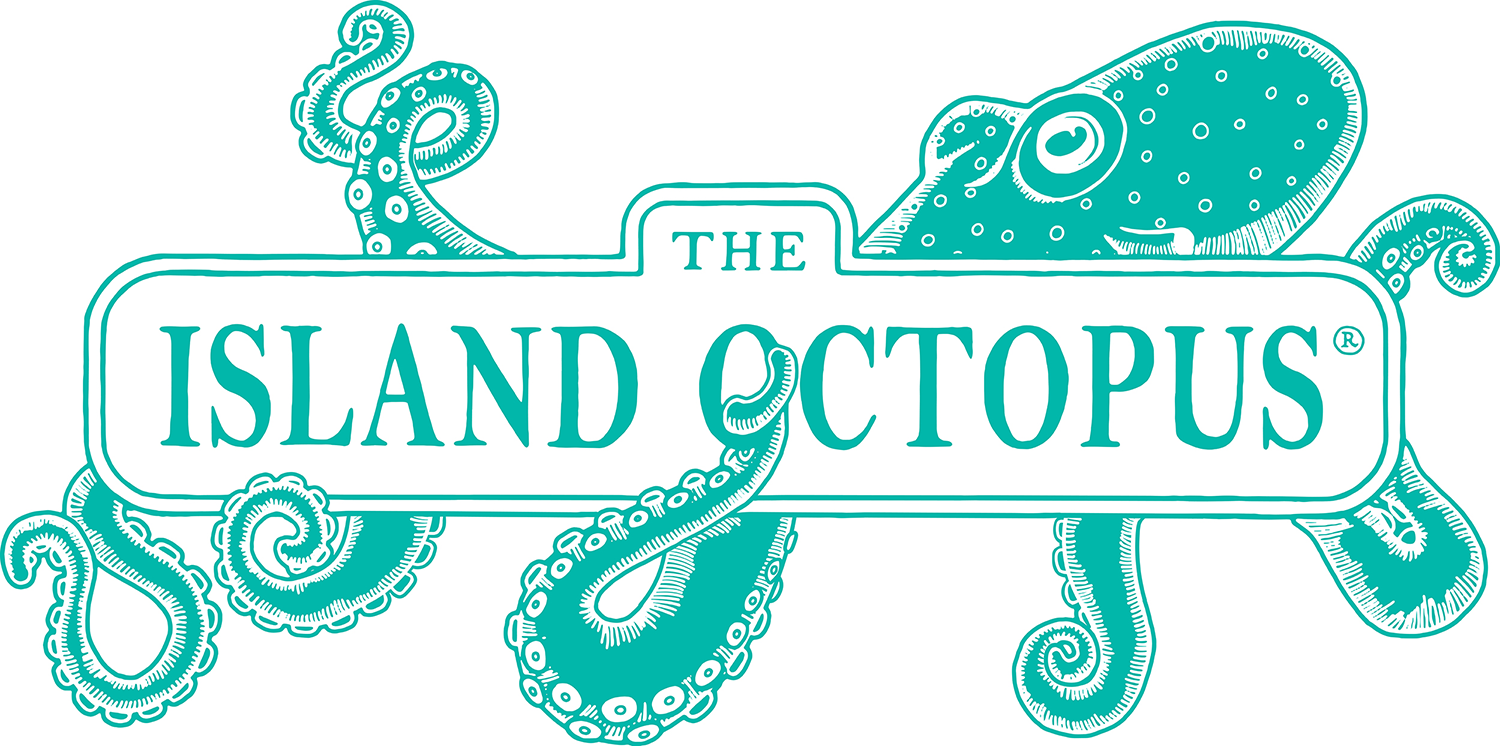|
The smooth, swirly banded tulip shells have an elegant spiral shape that resembles a tie-dyed tulip flower. You can find a variety of sizes, with a maximum size of about 4 inches. The banded tulip is a common shell in Southwest Florida and is also found in other areas of the Gulf of Mexico, eastern Florida, and northern Caribbean Sea.
Scientific name of the banded tulip: Cinctura lilium Tulips are predatory sea snails, feeding on other smaller mollusks. Coloring: gray, purple, pink, blue, orange and white with dark brown bands. Size: up to 4 inches Find banded tulips in Southwest Florida and the Gulf of Mexico, eastern Florida and the northern Caribbean Sea. It typically lives on sand between 2 and 150 feet deep. Frequently found on Sanibel Island, you can often find these pretty shells washed ashore, or live snails in or near tide pools. -Melissa
0 Comments
The glossy, smooth, marble-like olive shells have a distinctive oval-shape with a conical top. You can find a variety of sizes, with a maximum size of about 3.5 inches. The most common olive shells in Southwest Florida are the lettered olive, which are cream or tan colored with brownish v-shaped "lettering". I have also found all-cream colored shells, and recently a dark-gray colored one.
Scientific name of the lettered olive: Oliva sayana Olives are predatory sea snails, a marine gastropod mollusk in the family Olivdae. Coloring: tan, white, cream, brownish, gray Size: up to 3.5 inches Find lettered olives from North Carolina to Florida, Louisiana to Texas and south through the east coast of Mexico. It typically lives in near-shore waters, on shallow sand flats near inlets. The shells frequently wash ashore on Sanibel and Fort Myers Beach. -Melissa Our events this month include the Sanibel Shell Festival, the Sanibel Community House Arts & Crafts Fair, and a shamrock craft project at Sanibel Public Library. Learn more on our local event page.
On Patreon this month, we will be releasing some digital coloring pages from our 2 upcoming coloring books. We will also be releasing a new sticker design and discussing several art projects this month. Photo above: a Junonia shell watercolor collage created by Melissa this week! The Atlantic Calico Scallop is one of my favorite shells found in Southwest Florida. It features a lovely "calico" patchwork pattern of pink, red and white. The photo above includes some of our favorites we've found on the beach. They are very plentiful on Sanibel Island, and easy to spot since they are so bright.
Scientific name: Argopecten gibbus Calico scallops are bivalve (two-shells) molluscs Coloring: patterns of pink, purple and white (and sometimes orange and grey) Size: up to 3 inches Where to find: coastal waters from Maryland to Florida, throughout the Gulf of Mexico and the Caribbean Sea, and down to Brazil. -Melissa Our October events this month include the Wednesday Night Market at Alliance for the Arts, a candy corn craft project at Sanibel Public Library, Fall Festival at Edison Ford Winter Estates, and the Sanibel Community House Arts & Crafts Fair! Learn more on our local event page.
On Patreon this month, we will be releasing our next digital zine! This one will be themed Halloween Nights. On Instagram, Melissa is releasing new art/sketches for the 2023 Drawtober art challenge. Photo above: a very stylish shell we found a few months ago 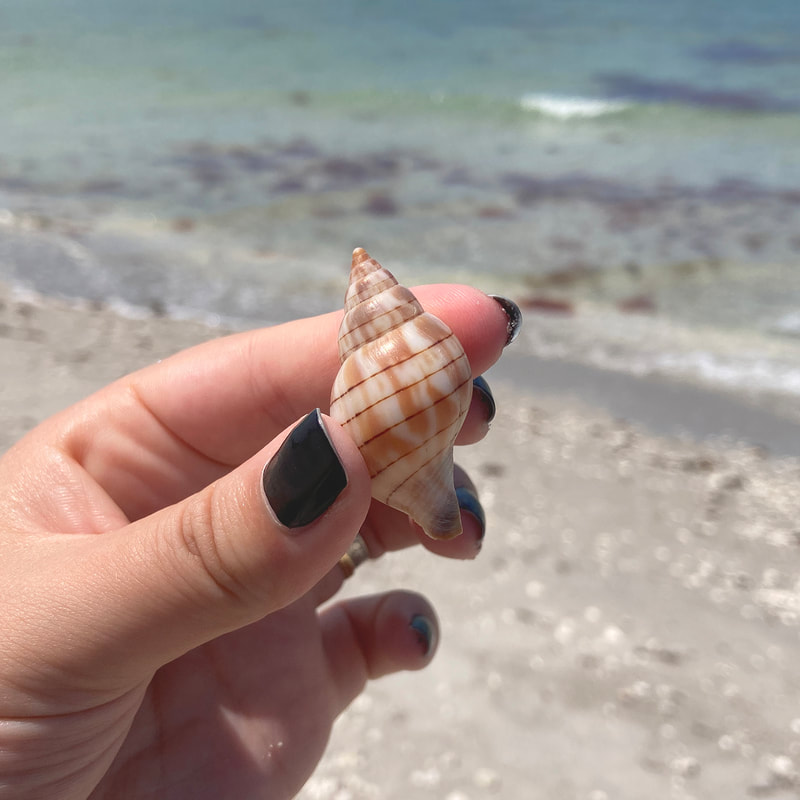 Banded Tulip at Blind Pass, Sanibel Island 2022 Banded Tulip shells (Cinctura hunteria) are commonly found along the barrier islands of Southwest Florida. They can also be found in other areas along the Gulf of Mexico, the Florida Keys and throughout the Caribbean Sea. The organisms responsible for the creation of these shells are a type of mollusk, more commonly known as aquatic snails. These mollusks are epifaunal carnivores, meaning they live most of their lives attached to hard surfaces beneath the ocean waves. They hunt for smaller prey on coral reefs and other rocky surfaces. These beautiful shells can grow as large as 4 inches or more. 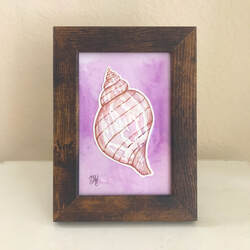 Banded Tulip original art by Melissa (water color, pencil, collage) 2022 The Cinctura genus contains 5 known species of Tulip. This genus is a member of the Fasciolariidae family, which also contains what is known as the true tulip shell (Fasciolaria tulipa). The Fasciolariidae family, also known as the tulip and spindle snails family, is thought to have first appeared during the Cretaceous period. Today’s species inhabit warm tropical and temperate waters. We have found Banded Tulip shells twice on Sanibel Island, once at Gulfside City Beach and the other recently at Blind Pass. Banded Tulips prefer intertidal sand flats, especially in quiet lagoon water. Their diets consist mainly of other mollusks, which they hunt amongst beds of sea grass. 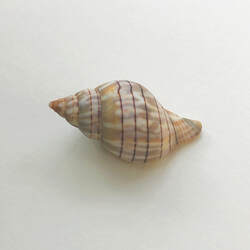 Banded Tulip found at Gulf Side Beach, Sanibel Island 2022 |
THE ISLAND OCTOPUS BLOGLearn more about our products and new releases, join us for events, and see photos of local wildlife! CATEGORIES
All
ARCHIVES
July 2024
|
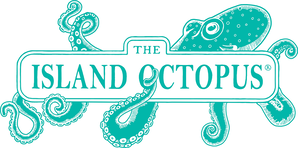


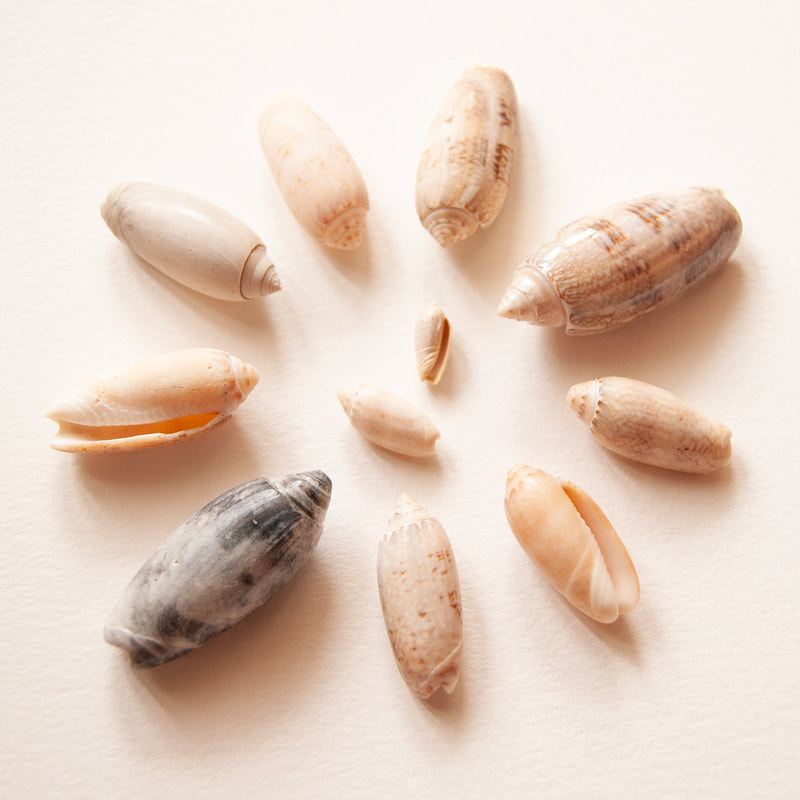
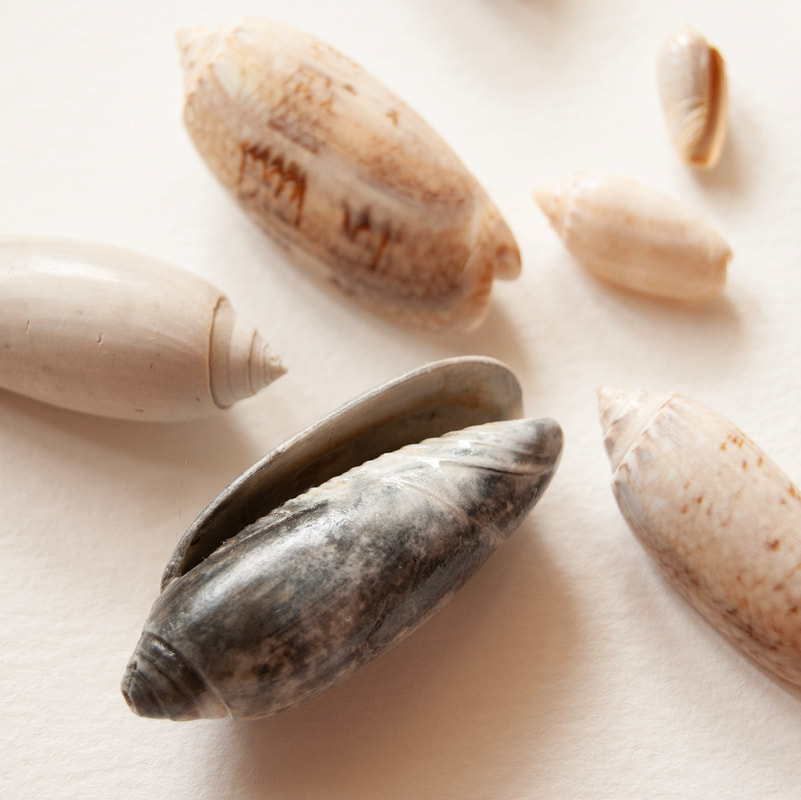
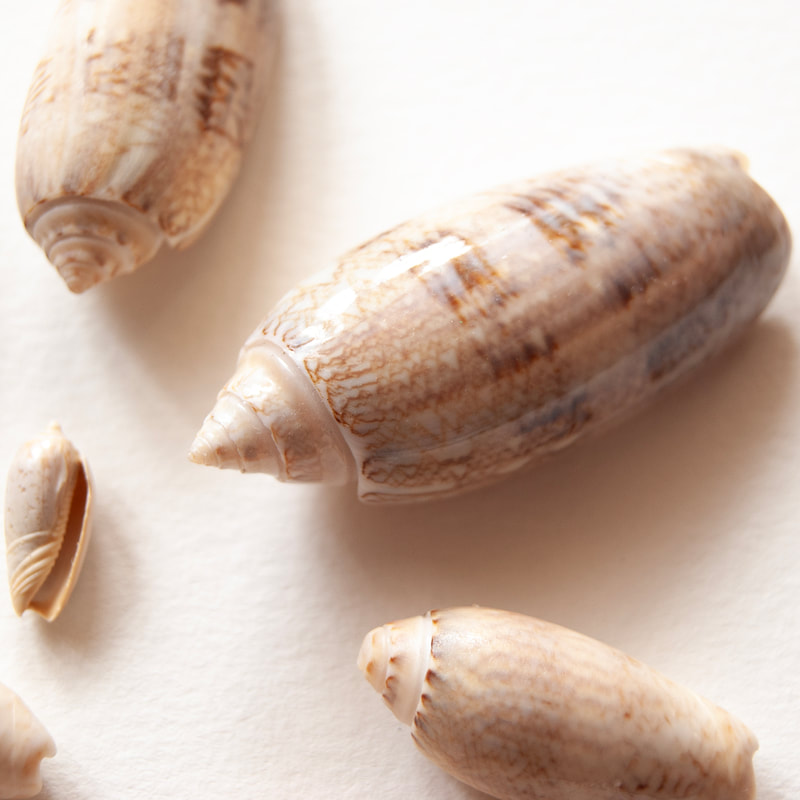
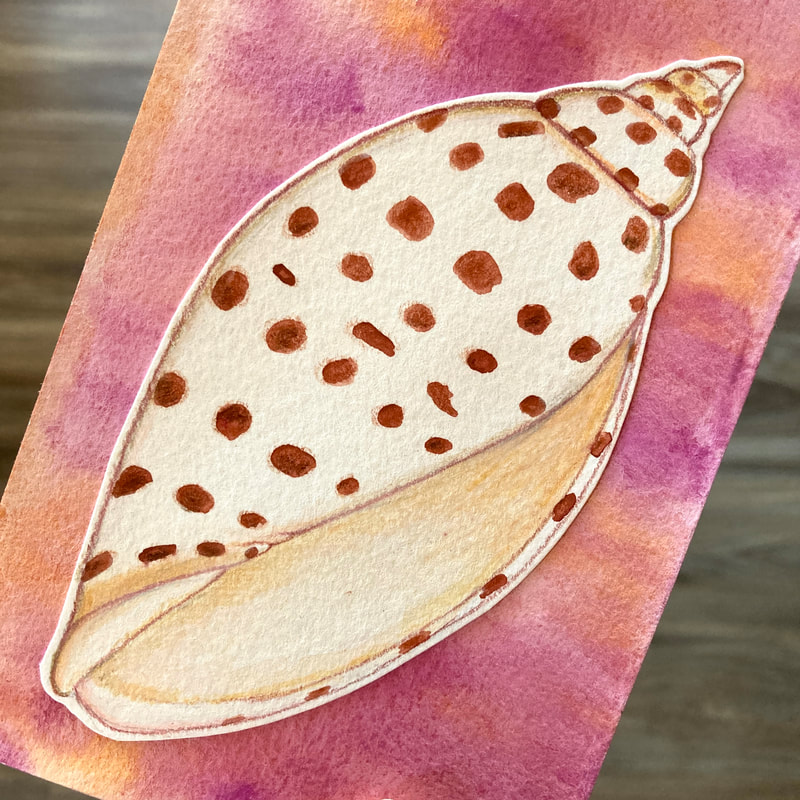
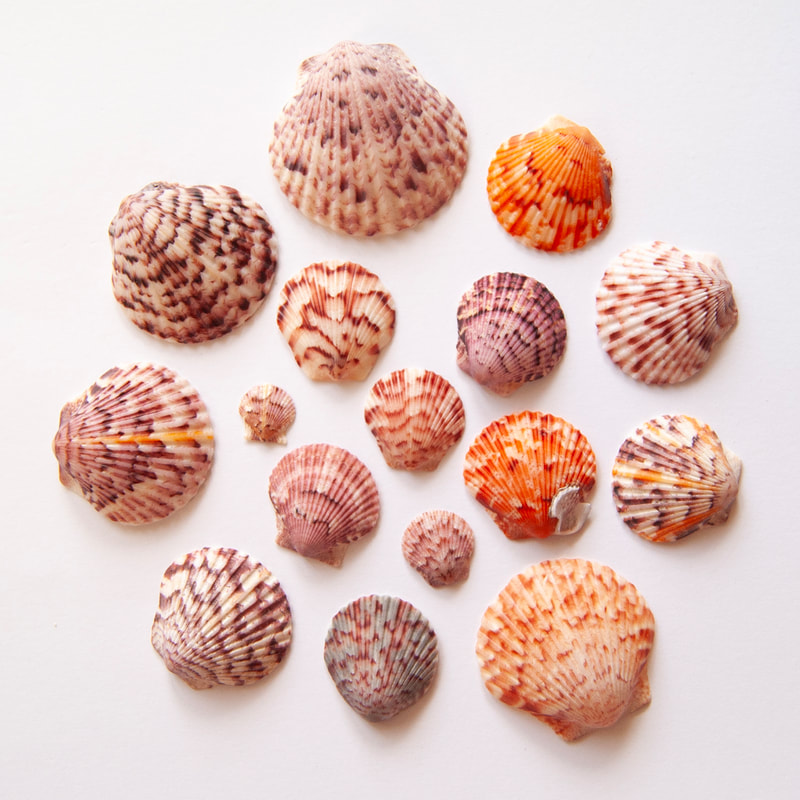
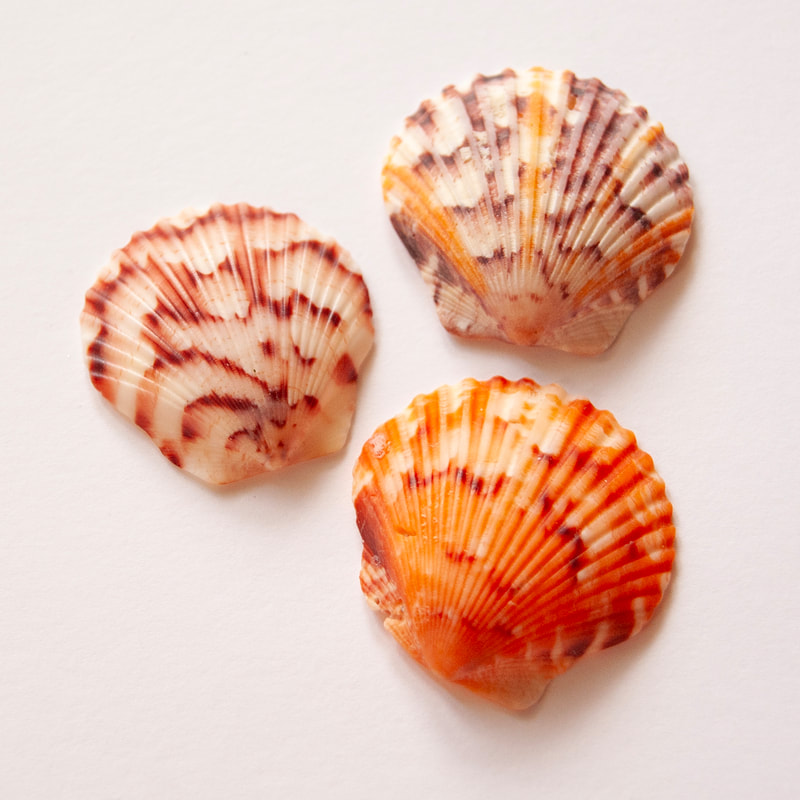
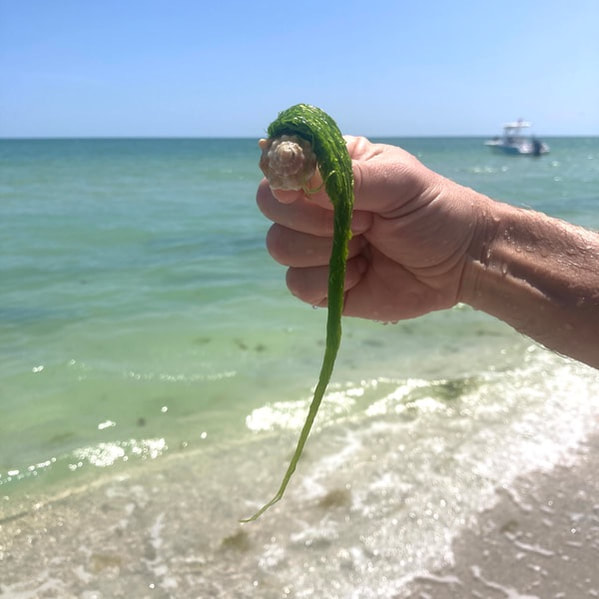
 RSS Feed
RSS Feed
